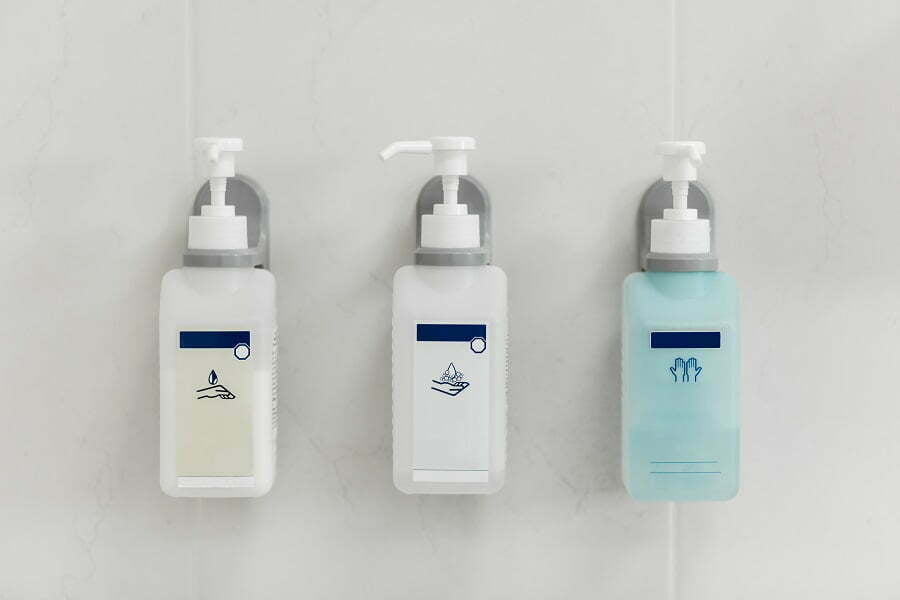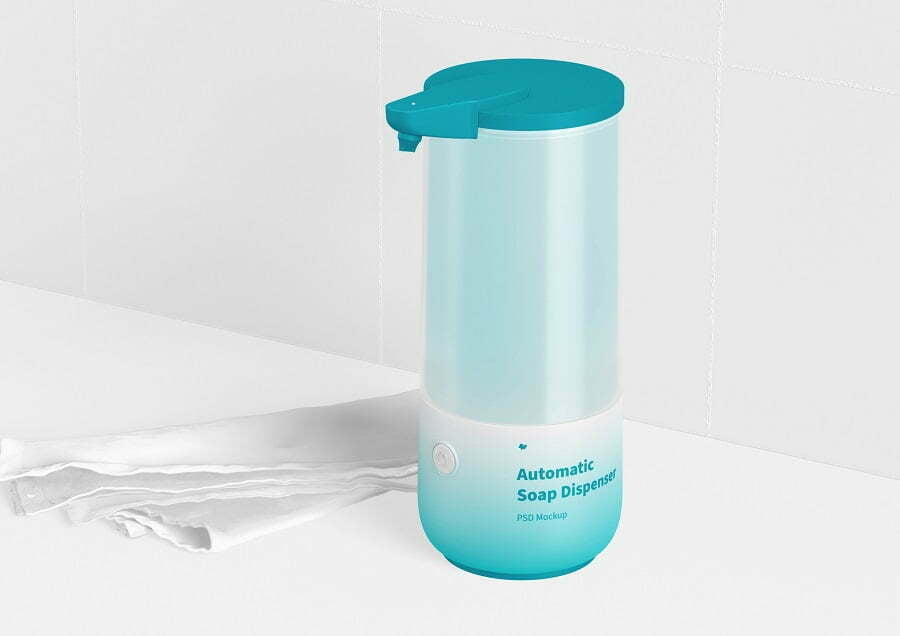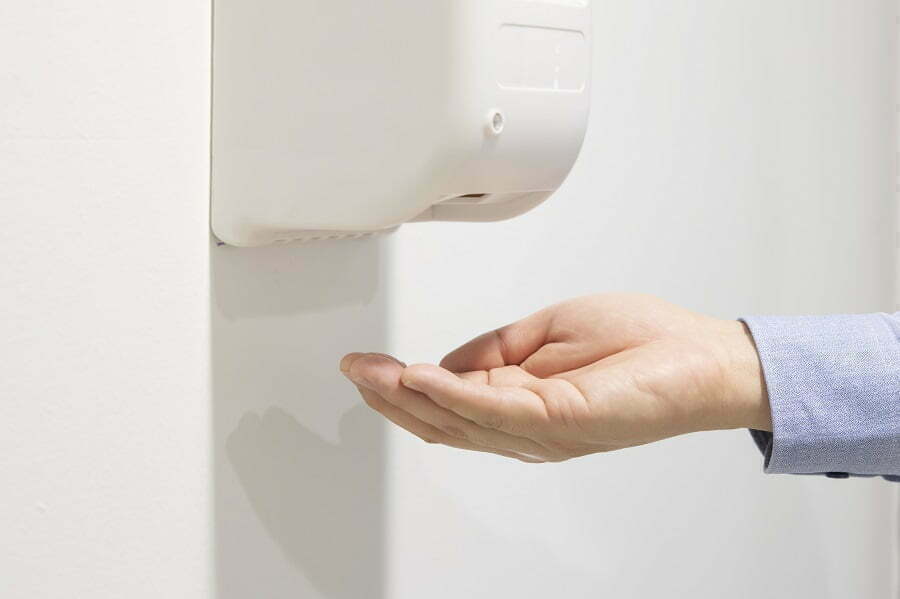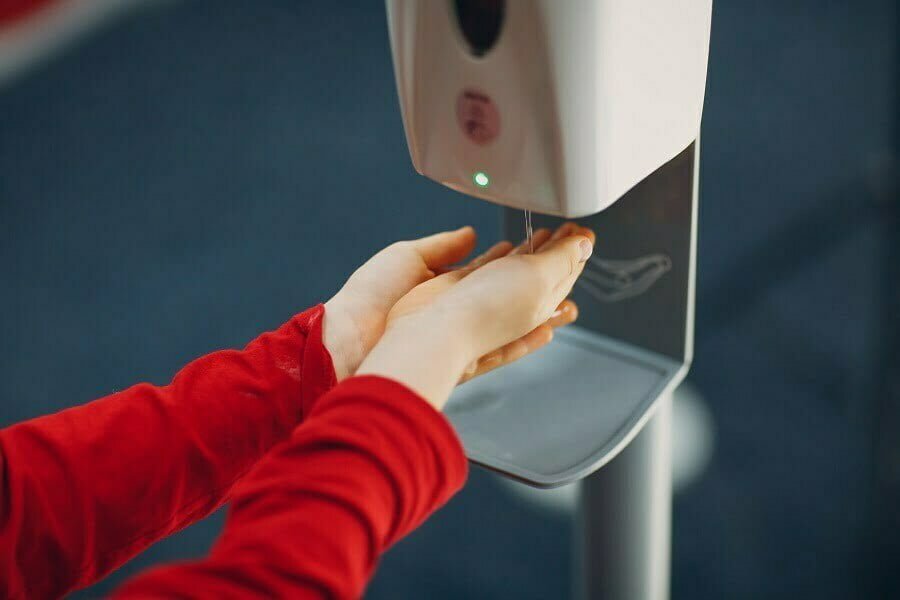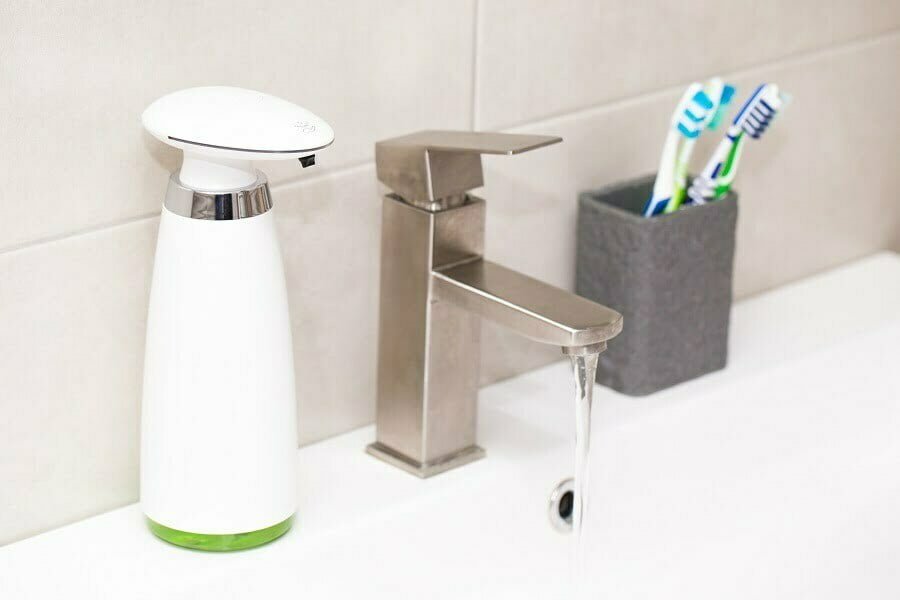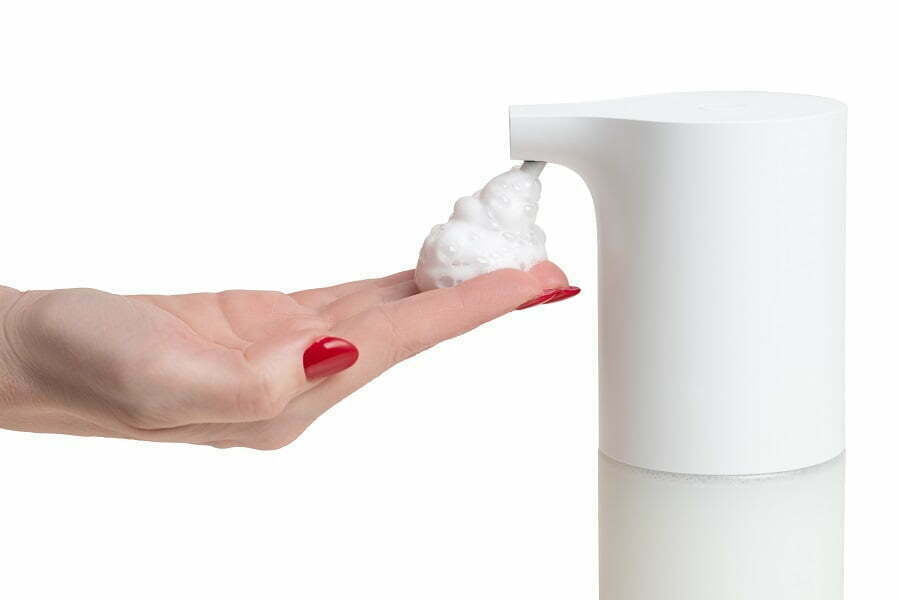Last updated on
An automatic liquid soap dispenser dispenses soap when you move your hands near its nozzle. They use infrared light sensors to detect motion and turn on the motor. Read on for more details.
The future of bathrooms may be smart technology that prevents the spread of germs. Automatic soap dispensers are a type of bathroom equipment that automatically dispenses liquid soap or other cleaning products when you move your hands towards them (or sometimes press on them.) You can use them to improve your personal hygiene.
The semi-automatic devices have been around since the early 1900s, but they were not widely adopted until recently due to their high price tag. However, as these machines become more affordable, we can expect them to gain popularity.
The Key Parts of an Automatic Soap Dispenser
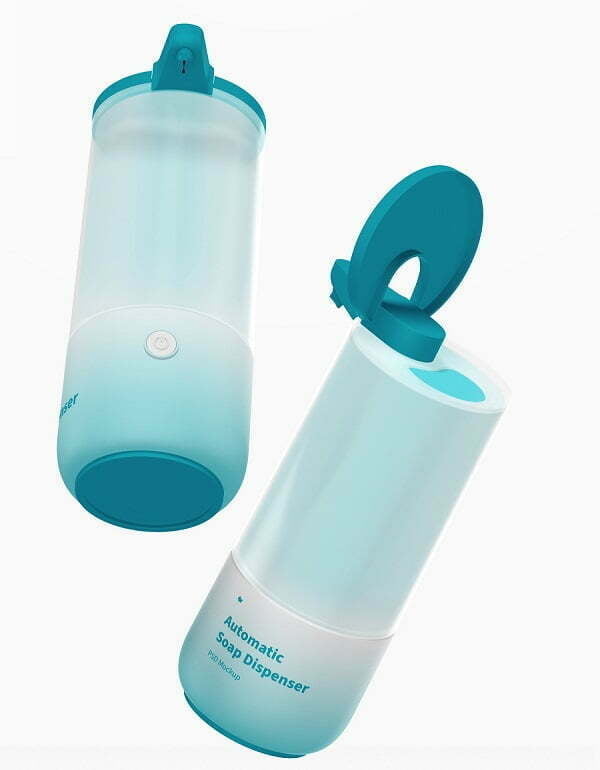
These are the main parts of the device:
- Soap container: This part holds the liquid soap inside it. It can be made up of plastic materials like polypropylene or glass bottles. Glass bottles have better insulation properties than other materials.
- Pump mechanism: This pump mechanism pumps out the required quantity of liquid soap when activated by hand or foot movements. There are two types of mechanisms used for this purpose; piston type and diaphragm type. The piston-type mechanism consists of a cylinder containing a piston that moves back and forth within the cylinder. The diaphragm-type mechanism uses a flexible rubber membrane instead of a piston. Both mechanisms use suction force generated from the air pressure difference between the interior and exterior sides of the device to push the liquid soap through the nozzle.
- Motion sensor: The infrared light sensors detect movement, such as the human body approaching the machine. When the user approaches the machine, the sensor sends signals to activate the pump mechanism. If there is no motion detected after some time, then the pump will stop pumping soaps. Most models also include a timer switch that shuts off the pump if it hasn’t pumped enough liquid soap during its working cycle to avoid wasting water.
- Control panel: This control panel controls all machine functions, such as pumping action, timing, etc. Some models also include LED lights so that users know how much liquid soap remains in the reservoir.
How Automatic Soap Dispensers Function
The basic principle behind any automatic soap dispenser is based on a motion sensor. When it detects movement towards the nozzle, the device dispenses a certain amount of liquid soap.
When liquid enters the system, it pushes down the plunger located at the bottom of the tank. The valve opens as soon as the plunger reaches its lowest position, allowing the liquid soap to flow out of the outlet pipe. After some time, the amount of liquid soap left in the tank will reach zero levels, and the cycle repeats itself.
To avoid wasting too much liquid soap, many manufacturers add sensors to monitor the remaining volume of liquid soap in the tank. If there’s no liquid soap left in the reservoir after a certain period of time, then the sensor sends signals to activate the pump mechanism to fill the space with fresh liquid soap.
Function by Type
There are three major categories of automatic soap dispensers available today. They are manual-operated, semi-automatic, and fully automatic. Manual operation means that the user must turn on/off the power supply button before using the unit. Semi-automatic units require only a one-step activation process, while full automation requires several steps to operate.
Manual Operation
These systems usually consist of a switch mounted on top of the cabinet where the liquid soap dispenser sits. Users flip the switch to start the pump mechanism. Once the desired number of cycles has passed, the switch turns off the pump motor.
These machines have been around since the early 1900s, but they were not very popular due to their complexity and high cost. However, these days, they are still used because of their low price tag.
Semi-Automatic Operation
If you don’t want your hands dirty during cleaning operations, you should opt for semi-automated devices. The main advantage of these is that they allow users to clean multiple items without manually refilling the liquid soap every few minutes. Most of them come equipped with timers that automatically shut off the pump after the pre-set duration.
Fully Automated Touchless Operation
In addition to being more convenient than other methods, fully automated systems can save up to 50% of the total running costs compared to conventional manual systems. Fully automated systems use sensors to detect when to dispense the soap and when the liquid soap runs dry. The device shuts off the pump and alerts the user via audible or visual signal. To prevent waste of liquid soap, some of these systems even offer optional refilling options.
How Do Automatic Soap Dispensers Compare to Handheld Spray Bottles?
Automatic soap dispensers provide convenience by eliminating the need to check whether the liquid soap levels are sufficient constantly. This saves both money and energy. On the downside, however, automatic soap dispensers tend to be less effective than handheld sprays. While the latter allows users to apply just enough pressure to get rid of dirt from surfaces, automatic soap dispensers often produce foam, leaving streaks on walls and floors.
Battery
There are two types of batteries, short and long-lasting. Long-lasting batteries are rechargeable and last longer than short-term batteries. Short-term batteries are cheaper but cannot last as long.
Long Term Batteries
They are rechargeable and contain lithium-ion cells. Lithium ions move between positive and negative terminals inside the battery cell. When current flows through the circuit, it causes electrons to flow back and forth across the gap between the electrodes. As soon as the charge reaches zero, the battery stops working. Recharging takes place in about 2 hours.
They are also known as alkaline batteries. Alkalines are cheap and easy to find at any store. You will see many different brands such as Duracell, Energizer, Panasonic, etc.
Short Term Batteries
They are disposable and contain zinc carbonate cells. Zinc carbonates are inexpensive and readily available. It contains a small amount of mercury. Mercury is poisonous, so dispose of it properly.
FAQ
Most automatic soap dispensers dispense liquid soap. In addition, they can dispense hand sanitizer and other solutions.
You should always follow manufacturer instructions regarding how much water needs to be added to the machine.
An automatic soap dispenser helps practice good hygiene habits. It is also very convenient.
Automatic soap dispensers run on electricity. The power source for most automatic soap dispensers is either AC or DC. Both sources deliver electric charges that cause the motor to spin. Most automatic soap dispensers come with built-in batteries. These batteries supply electrical power to operate the unit.
Yes, you can refill a soap dispenser manually. Most models require you to add liquid soap yourself when it runs out.
It depends on what item you are putting next to the automatic soap dispenser and whether the temperature exceeds 120 degrees Fahrenheit. For example, placing a pot containing boiling water over an automatic soap dispenser can damage the mechanism. But, placing a cup filled with coffee close to the automatic soap dispensing system won’t harm it.
Automatic soap dispensers do not get dirty very often because you do not touch it during use.
The life span of the battery varies from model to model. You will find some units which last longer than others. Generally speaking, the average lifespan of a battery is about 3 months.
Recap
Liked this article? Here's what you can read next:
